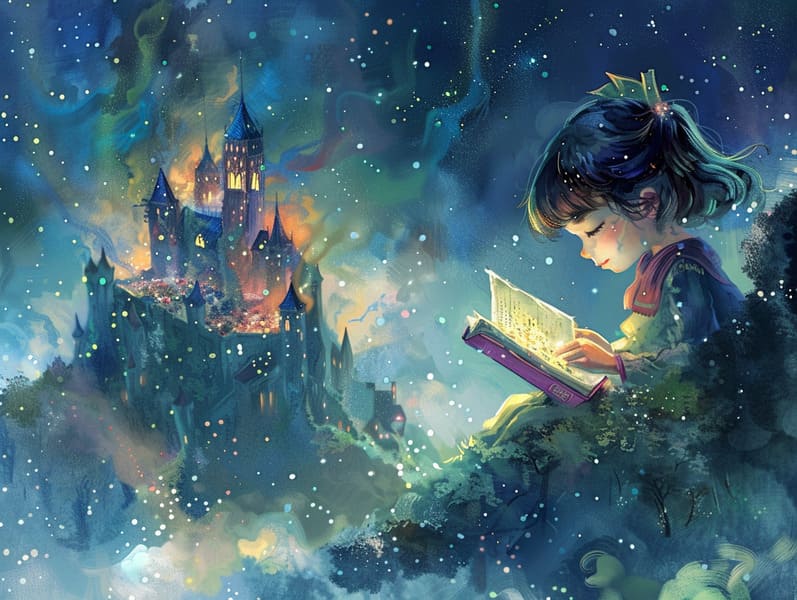The Birth of Vintage Fairy Tales and Its Immortal Beauty.
The Birth of Vintage Fairy Tales and Its Immortal Beauty.
Blog Article

Fairy tales for kids have enduring presence. These tales have been transmitted from one generation to the next far before they were ever written down. They came from a variety of traditions, including Asian traditions. They were initially conveyed among grown-ups, often carrying themes and messages aligned with the societal norms and beliefs of the time.
The Grimm brothers, Jacob and Wilhelm (the Grimm brothers), were among the first to compile and release many of these beloved tales. Their compilation, "Grimm's Fables," included narratives like "Ashenputtel," "The Bread Crumb Trail," and "Schneewittchen," which have since become mainstays in the world of beloved fairy tales. Similarly, H. C. Andersen's whimsical tales, such as "The Sea Maid," and "The Story of the Ugly Duckling," have touched hearts worldwide, establishing their place in the pantheon of classic fairy tales.
Despite being ancient, classic fairy tales remain as applicable as ever, especially as children's night stories. These whimsical stories are now available in multiple formats, including vibrantly illustrated books, charming animations, and internet fairy tales.
Their lasting presence can be linked to several fascinating points:
Moral Lessons: Ancient fairy tales often illustrate important moral lessons. Tales like "The Shepherd Boy and the Wolf" teach the value of being truthful, while "The Race of the Tortoise and the Hare" illustrate the traits of determination and unpretentiousness. These stories offer children clear distinctions between ethical and unethical, shaping their moral compass in a soft yet significant way.
Empathy and Awareness: Fairy tales frequently involve characters facing obstacles and hardships, stimulating listeners to sympathize with their struggles and back their triumphs. For instance, "Beauty and the Beast" conveys the value of seeing inner beauty to recognize the real person of a person, building compassion and awareness.
Cultural Appreciation: Many old fairy tales are deeply embedded in the cultural contexts from which they sprang. Delving into these tales can provide illuminating insights into different societies, encouraging a sense of global appreciation and comprehension.
Imagination and Creativity: The extraordinary elements in ancient fairy tales—enchanted lands—stimulate children’s visions and dreams. These narratives guide readers to magical realms, triggering creative these guys dreams and a sense of magic that continues a lifetime.
Traditional fairy tales are not only fantastical but also pedagogical. They function as captivating tools in nurturing various brain and heart skills in little ones. When traditional fairy tales are read aloud, they promote language proficiency by teaching new phrases and intricate sentence structures. This practice also nurtures hearing perception and attentiveness, as young ones remain attentive, looking forward to see what happens next.
Furthermore, conversing about the themes and characters of ancient fairy tales can improve problem-solving abilities and analytical skills. Young readers are led to detect patterns, foresee events, and grasp cause and effect. These talks also help the young articulate their thoughts and feelings, fostering their emotional intelligence.
In today’s modern era, the existence of free fairy tales online has made these stories more obtainable than ever. Internet sites and web apps make available huge assortments of Grimm's fairy tales that can be browsed or heard anytime, anywhere. Fairy tales read out loud are particularly well-liked, making available an enjoyable way for kids to engage with these entrancing tales. Read-aloud stories and narrated videos transport characters and settings to life, often joined by captivating musical scores and harmonies that amplify the narrative experience.
The lasting appeal of ancient fairy tales lies in their ability to shift to the present while holding onto their core values. Contemporary takes of these tales often spotlight more diverse characters and modern settings, making them understandable to today’s audience. However, the main ideas of bravery, kindness, and impartiality remain unchanged, continuing to reach readers of all ages.
Fairy tales also offer a sense of contentment and recognition. They extend a well-ordered narrative with a unmistakable beginning, middle, and end, often winding up with the finalization of conflicts and the triumph of honesty over deceit. This predictability can be calming for young readers, giving a sense of invariability in an fluid world.
Traditional fairy tales continue to captivate and train new generations, maintaining their charm and applicability in modern society. As nighttime stories for kids, they supply a perfect blend of wonder and wisdom, aiding moral values, empathy, and creativity. The existence of digital storybooks and the widespread nature of fairy tales narrated ensure that these ancient narratives remain accessible to new generations.
By holding onto and passing on these tales, we continue to exalt the rich tapestry of storytelling and cultural heritage. Whether you are accessing a vibrantly illustrated book, experiencing a internet collection, or listening on an audio story, the appeal of timeless fairy tales is always within reach. These narratives remind us of the unceasing spell of tales and its ability to bind us across epochs and places.
No matter if you are viewing a colorful picture book, experiencing a digital library, or listening to an sound book, the enchantment of famous fairy tales is always within reach.
These narratives point out of the undying effect of fairy tales and its ability to bind us across eras and regions, creating a bond that delights and instructs alike.